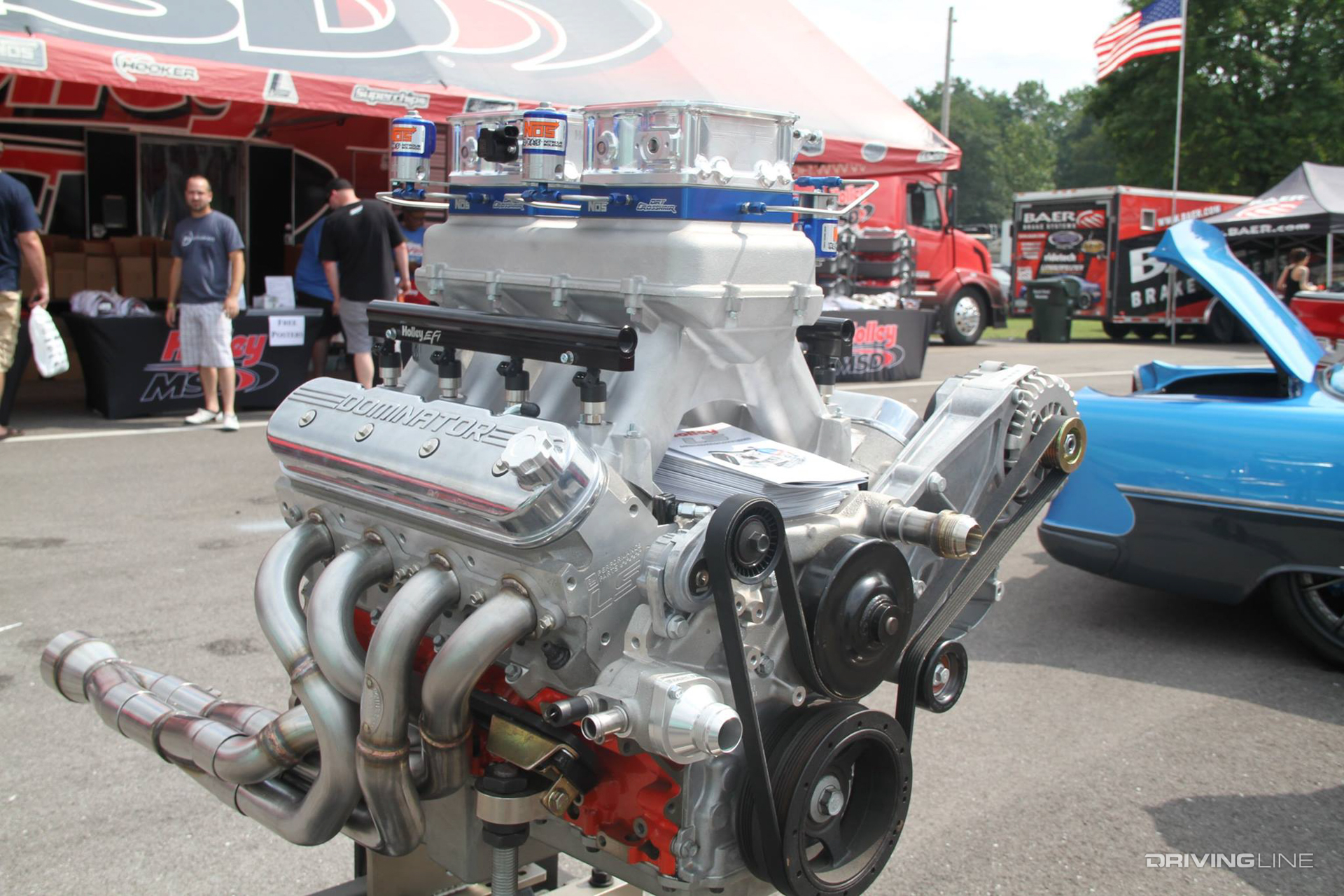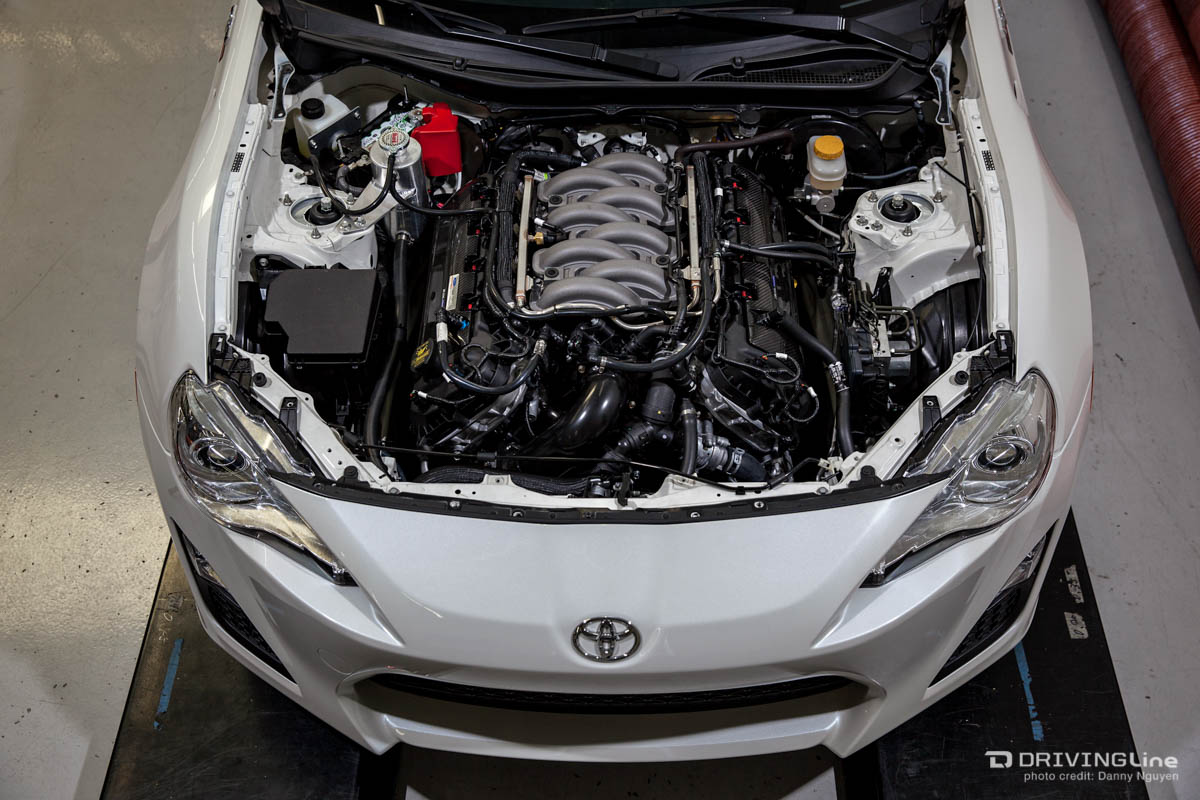We’re all enthusiasts at Driving Line, so tinkering and tweaking with cars until they bark a little louder and accelerate a little faster is something we look at as a necessary part of the automotive life. Often the easiest and most direct path toward rebooting a car’s fun factor is swapping out the engine. Dropping a high-horsepower V8 into an otherwise placid vehicle goes right back to the roots of hot rodding.
Today, engine-swap choices are better than ever. Big-power motor conversions from GM, Ford and Chrysler have been joined by more exotic BMW and Toyota V8s. Of all of them, two options stand out from the rest as the most widely available V8 options; not only can these both be built up for a reasonable cost with plenty of aftermarket options but they both hammer out more than 400 hp in a standard tune. The GM LS and the Ford 5.0 Coyote offer accessible reliability and power, whether you’re building something for the street or the dirt. Let’s take a look at what sets each of these popular swap choices apart.
GM LS 5.7/6.2

The GM LS Series first appeared in 1997, and their compact aluminum blocks, 300-plus horsepower and 25-mpg fuel efficiency seemed, at the time, almost too good to be true. There are plenty of 5.7 LS1-powered Corvette and Camaro/Firebird donor cars out there, as well as countless iron-block truck motors.
A more recent GM performance motor, the 6.2 was first offered as standard in the ’08 Corvette and is a favorite among LS fans. This 430 hp beast can turn almost any vehicle into a reliable dominator anywhere you choose to take it—all you have to worry about is keeping it on all four wheels. Shannon Campbell’s LS-powered “Dragon Slayer” usually takes the abuse of an entire ULTRA4 season without having to so much as pull off the cylinder heads.
Shoehorned into everything from street-going Mazda RX-7s, late-model muscle cars, competitive drift whips and trophy trucks, LS engines have massive aftermarket parts support, making it relatively inexpensive to adapt to almost any street or off-road use.
On the streets, racetracks and in the deserts, the LS is everywhere — making it too common a choice for some enthusiasts. What can’t be argued is that the reason for the engine’s popularity is its amazing combination of compact size, power and reliability.
Ford Coyote 5.0

In an early engine-swapping inspiration, Carroll Shelby squeezed the small-block Ford 289 into the sporty British AC roadsters and the classic Shelby Cobra was born. In the ’80s, the 302 would become the popular 5.0 of the Fox-body years. Ford shifted to a modular 4.6 V8 in the ’90s in search of better fuel economy and more horsepower. A direct evolution of the early Ford small-blocks, these 4.6s were good enough for the time but could only rev as high as the old 302. As soon as GM dropped the all-new LS on the motoring world in ’97, Ford was pushed firmly into second place. Ford loyalists had to cope with decent horsepower, delivered at a low redline.
It took until 2011 for Ford to unleash a true rival to the Chevy LS. It was called “Coyote” to honor the great hard-charger A.J. Foyt, who used and developed the Ford V8 Indy engine in his Coyote Indy cars — one of which gave him his fourth Indy 500 victory (the first driver to achieve this milestone).
The Ford 5.0 Coyote pounded out an impressive 412 hp with factory tune, finally enough to compete with the 6.2 LS. Immediately becoming the go-to modern swap for street rods and muscle cars, the new Coyote powers vintage Broncos through the desert and classic Mustangs on the asphalt. It’s a high-revving motor looking for a challenge.
APPLES-TO-APPLES COMPARISON
With so many variations and options, it can be difficult to get an objective view between these two engine choices. Landing on a popular variation, as well as a feasible junkyard pull, the ’12 Camaro and Mustang show some interesting factory specs:
LS3 Camaro 6.2L

- Horsepower: 426 at 5,900 rpm
- Torque: 420 at 4,600 rpm
- HP/Liter: 68.7
Coyote Mustang 5.0L

- Horsepower: 412 at 6,500 rpm
- Torque: 390 at 4,250 rpm
- HP/Liter: 82.4
On paper, the LS3 makes more torque and power than the Coyote, but it needs an additional 1.2L to do it. If the stock Coyote was built as a 6.2L, like the LS, it would make a whopping 510 hp.
Physically, the smaller-displacement Coyote is larger, due to its dual overhead cams. The DOHC and variable-valve-timing design can withstand extremely high rpm, allowing the engine to rev higher than the LS and providing serious hot rodding options if the budget can handle it. For reliability, the LS comes out on top, with less moving parts than the Coyote. For most of us, the sky’s the limit on modifying either of these and both have been built up beyond 1,000 hp.
The LS and the Coyote powerplants are marvels of engineering, efficiency and adrenaline. They are true world-beaters. Take a look at whatever you have leaking all over your driveway and imagine what a big-horsepower swap could do for your automotive cred. Wrecking yard or crate, swapping in one of these Detroit growlers will transform anything they can be mounted in. Your challenge is to keep the rubber on the road.




















